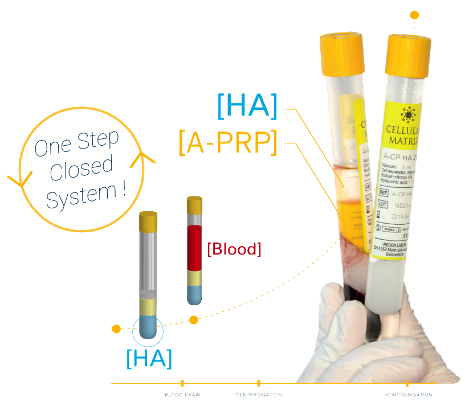combination therapy for osteoarthritis
What is Osteoarthritis?
Osteoarthritis is a common form of Arthritis in which the body’s joint surface (cartilage or a smooth articular surface that allows pain-free movement) wears out.
This tissue cushions and protects the ends of bones in a joint. When it wears out, the bone ends rub on one another and cause pain.
The term arthritis literally means inflammation of a joint, but it is generally used to describe any condition in which the cartilage is damaged.
What Causes of Osteoarthritis?
Osteoarthritis is most commonly an age-related or degenerative joint disease. The surface damage causes a natural Inflammatory response.
Arthritis can be caused by excessive strain over prolonged periods of time or by other joint diseases, injuries, or deformities. Many other conditions can also cause arthritis, and the exact cause is often unknown.
In extreme cases, the cartilage can completely wear away, leaving nothing to protect the bones in a joint, causing bone-on-bone contact.
What Symptoms of Osteoarthritis?
The warning signs of Arthritis are related to inflammation in one or more joints for more than two weeks. Typical symptoms are:
- redness
- tenderness
- swelling,
- heat and
- pain.
- limitation of motion of a joint,
- early morning stiffness
- skin changes, including rashes.
Osteoarthritis can limit a person's normal range of motion (the ability to move and bend a joint freely). When severe, the joint may lose all movement, causing a person to become disabled.
Disability often happens when the disease affects the spine, knees, and hips.
How is Osteoarthritis Treated?
Initial treatment for osteoarthritis of the hip or knee is conservative, consisting of:
- Resting and avoiding vigorous weight-bearing activities,
- Using a cane or a knee brace,
- Using non-narcotic analgesics
- Taking anti-inflammatory medications and
- Injections of cortisone
When conservative measures have been exhausted and are no longer helpful, and the arthritis has become disabling, surgery may be recommended.
What is Blood Plasma?
Plasma contains many factors essential for cell survival, including nutrients, vitamins, hormones, electrolytes, growth factors (such as IGF and HGF), and proteins.
Among the plasma proteins, the molecules vital for coagulation and fibrin polymer formation will serve as a scaffold for cell migration and new tissue generation.
What are Platelets?
Platelets are key factors in hard and soft tissue repair mechanisms.
They provide essential growth factors, such as FGF, PDGF, TGF-ß, EGF, VEGF, and IGF, which are involved in stem cell migration, differentiation, and proliferation.
Platelets also stimulate fibroblasts and endothelial cells to induce new extracellular matrix deposition and neo-vascularisation.
What is Hyaluronic Acid?
Hyaluronic acid (HA) is a major component of synovial fluid that contributes to joint homeostasis.
Platelet-Rich Plasma (PRP) Therapy
Platelet-rich plasma (PRP) is concentrated or enriched with platelets from the patient’s blood (autologous).
PRP regulates the repair mechanism, can stimulate bone and soft tissue healing and reverses the catabolic environment.
PRP contains several different growth factors and other cytokines. Platelets provide essential growth factors, such as FGF, PDGF, TGF-ß, EGF, VEGF, and IGF, involved in
- stem cell migration,
- differentiation and
- proliferation.
Platelet-rich plasma (PRP) Therapy is a proven therapy in healing soft and hard tissues. Benefits include:
- Alleviate painful symptoms associated with conditions like arthritis and tendonitis.
- Reduce inflammation,
- Promote cell modulation and healing, and
- Delay joint replacement surgeries
Combination Therapy
There is a combined therapy that includes both HA and the Patient’s PRP for improved clinical therapies for Osteoarthritis.
This combined therapy synergistically combines the complementary clinical effects of HA and PRP to provide added benefit for Osteoarthritis patients.
Combination therapy plays a significant role in visco-supplementation and pain relief in Osteoarthritis. A network of HA chains constitutes an ideal cell-friendly matrix.
The patient’s platelet concentrate provides growth factors supported by 25 years of clinical experience. It shows pain relief and functional improvement lasting 6 to 12 months.
Breaking the Vicious Cycle of Osteoarthritis
The molecules vital for coagulation and fibrin polymer formation among the plasma proteins will serve as a scaffold for cell migration and new tissue generation.
A growing body of evidence supports the treatment of Osteoarthritis. The mechanism of action comprises anti-inflammatory activity and activation of cell-signalling cascades.

About Combination Therapy
Combination therapy has a crucial role in new matrix synthesis for tissue regeneration.
Immediate formation is needed in one easy step of a cell-friendly HA network in which platelets are dispersed using a specifically approved system for the preparation of the HA / A-PRP association.
Combination therapy is a Medical Device containing 2 ml of natural, non-crosslinked HA at a concentration of 20 mg/ml (40 mg total) in addition to the thixotropic cell-separation gel and the sodium citrate anticoagulant solution.

Professional Teams We Have Worked With






All Rights Reserved | Dr. Bassam Moses
